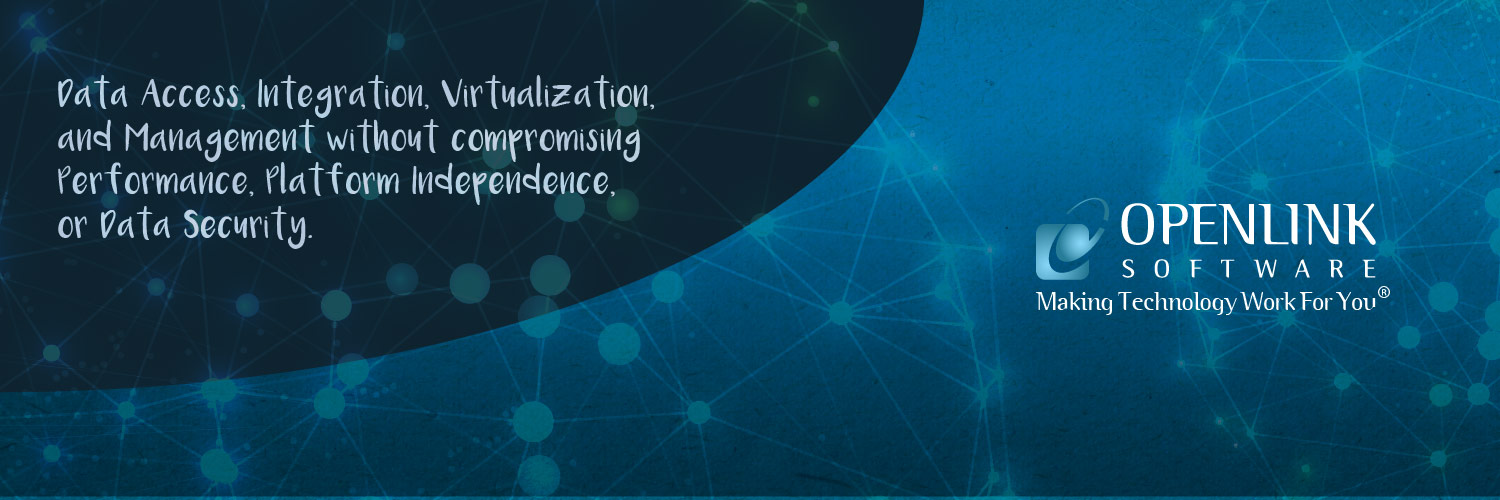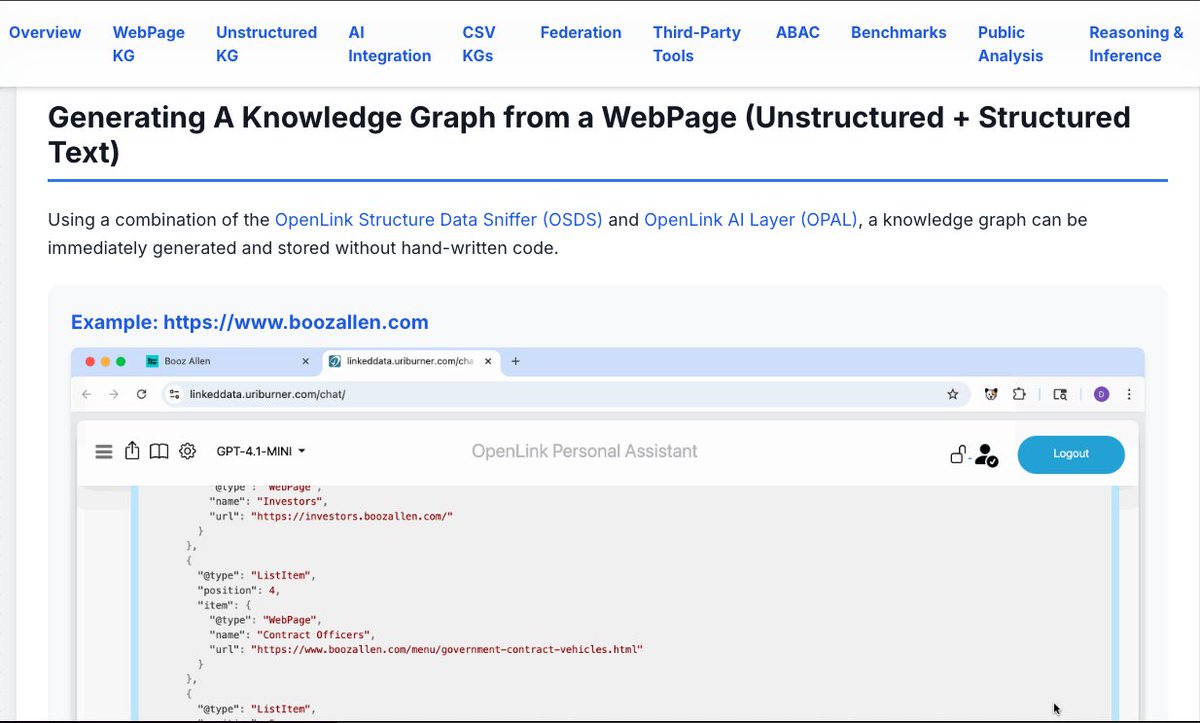
OpenLink Software
@OpenLink
High-Performance Data Access, Virtualization, Integration, and Management that works for You! #KnowledgeGraph #LinkedData #SPARQL #ODBC #JDBC #SPASQL #DBMS
Here’s a modern hypermedia document showcasing a collection of powerful Virtuoso functionality demos—spanning databases, knowledge graphs, filesystems, and third-party API integration. First up: generating knowledge graphs from document content. openlinksw.com/data/html/virt…

11/ 📌 Final thoughts: The create → save → share paradigm is timeless. Now, it’s AI-enhanced and Web-native. You don’t need a siloed platform to publish— just open standards and good habits. This isn’t nostalgia—it’s pragmatic innovation leveraging existing open standards…
10/ 📸 Real-world usage examples: • Finder integration (macOS) • Drag-and-drop to public folders • Files auto-published • Feeds auto-updated Example folders: 📂 openlinksw.com/data/html/ 📂 openlinksw.com/data/screensho… 📂 openlinksw.com/data/screencas…
9/ 🧠 Metadata Is Handled Too (boosting discoverability): • Add titles, descriptions, and provenance information • AI agents interpret this metadata for better context • Search results improve as a result The Virtuoso Briefcase, front-end skin to its WebDAV-based…
8/ 🎯 Why this matters: • Save content directly via a local WebDAV-mounted folder • Content is both human- and AI-friendly • Auto-syndicated via RSS, Atom, and OPML • Create content locally, publish globally • No lock-in • Fine-grained access control (ABAC) ensures…
7/ 🧰 Today, thanks to WebDAV—a widely deployed, tried-and-tested extension of HTTP—as implemented in @OpenLink’s ODS Briefcase (an add-on to #VirtuosoRDBMS), we can once again embrace decentralized publishing, grounded in the original create, save, and share file pattern that…
6/ But Web 2.0 came along and changed things. • Platforms offered convenience via centralization • Discovery became algorithmically siloed • Feeds got buried, and eventually destroyed • Control shifted away from users It was a trade: usability for ownership. Monetization…
5/ Early blogs, pioneered by Dave Winer (@davewiner) followed the Web ethos, with the aim of democratizing publishing by taking out the challenges associate with personal web server management for web-scale use and administration, exemplified by his Radio UserLand…
4/ We (@OpenLink) have long aligned our core product philosophy, architecture, and implementation with the powerful connectivity stack unleashed by the Web. Take Virtuoso’s WebDAV Filesystem as an example—it embodies everything covered in this thread. Our public /html/ folder…
3/ Points 1–3 in the prior post gave us the World Wide Web → en.wikipedia.org/wiki/World_Wid… (the operating environment that makes this platform possible). While point 4 is now powering the Giant Global Knowledge Graph—increasingly loosely with LLMs to enrich context and sanitize…
2/ Tim Berners-Lee’s (@timberners_lee) breakthrough made the Web possible by enabling: 1. Unambiguous naming 2. Document-type negotiation 3. HyperText via HTML 4. HyperData via RDF & Linked Data → w3.org/DesignIssues/L…
🧵 The File Create, Save, and Share Paradigm — Revisited 1/ Before the Web, data lived in application-specific documents. The Web changed that by introducing: • URIs → w3.org/TR/uri-clarifi… • URLs → en.wikipedia.org/wiki/URL • HTTP → w3.org/Protocols/ • HTML →…
One of the great benefits of natural language becoming part of the computing UI/UX stack—courtesy of LLMs—is the emergence of a new wave of Web User Agents that actually understand and utilize the open protocols and best practices that define the Web experience, as originally…
Important lesson. LLMs are Langulators. Period. They aren’t reliable knowledge bases, nor are they anywhere near all-knowing oracles. The fundamental rule remains: Never trust — always verify. In the age of AI, verifying machine-generated output will become the foundation of…
Here’s the Grok 4 snafu that changes everything—and amounts to a major deduction. Despite strong performance in earlier stages, it ultimately did not win this comparison. Why? Because Grok 4 made a serious error by assigning the article’s author, Peter Voss, to the DBpedia…
But one last—and rather disturbing—discovery as I reviewed the coreference assignments made by Grok 4 regarding Peter Voss, the author of the test article: It incorrectly mapped the author's identity to: dbpedia.org/resource/Peter… — which refers to a Nazi SS officer. Peter Voss,…
Conclusion Grok 4 has overtaken Gemini 2.5 in one of my typical workflows: Knowledge Graph generation from article content, which is then stored in one of my Virtuoso-hosted Knowledge Graphs—courtesy of OPAL (OpenLink AI Layer) and the OSDS (OpenLink Structured Data Sniffer)…
Same experiment, but using @Google Gemini 2.5. Using OPAL (@OpenLink AI Layer)—powered by our Structured Data Sniffer (OSDS) browser extension—I asked Gemini 2.5 Pro to perform a typical note-taking task: generate a Knowledge Graph from an article. 📊 Knowledge Graph Generation…
Using OPAL (@OpenLink AI Layer), and specifically our Structured Data Sniffer (OSDS) browser extension, I asked @Grok 4 to perform a typical note-taking task—generating a Knowledge Graph from an article. 📊 Knowledge Graph Generation Test [1] Static OPAL Session (scrollable…
The usual one-liner command, and @Grok 4 is now loaded into OPAL (@OpenLink AI Layer), deployed via our Virtuoso platform. Command: OAI.DBA.FILL_CHAT_MODELS('xai-xxx','xai') Now it’s time to test it against my typical workflows. In previous runs, Grok 3 ranked just behind…
Not only do LLMs perform well at generating structured data using RDF—they also handle a variety of RDF notations, each with its own syntax. Why Should You Care? Structured data is essential fuel for AI agents. RDF notations aren’t interchangeable abstractions; each comes with…